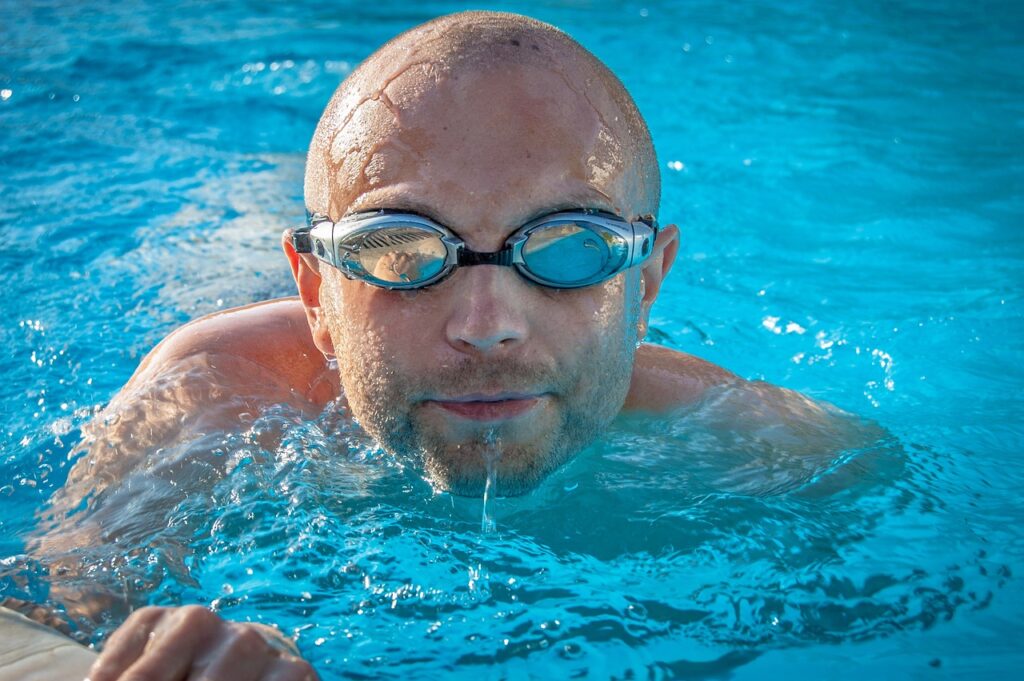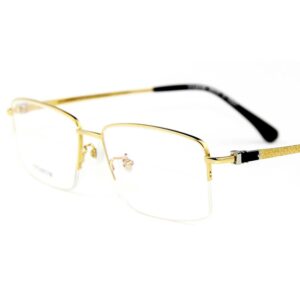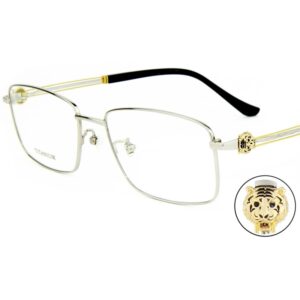Are you tired of dealing with intense glare when driving or spending time outdoors? This glare can cause discomfort, eye strain, and even temporary blindness, making outdoor activities challenging and unsafe. Polarized sunglass lenses are specifically designed to reduce glare, providing a clearer and more comfortable visual experience.
Polarized sunglass lenses are specially treated lenses that reduce glare caused by reflected light. These lenses contain a special filter that blocks out intense reflected light, improving visual clarity and reducing eye strain, especially in bright conditions.
Now that you understand what polarized lenses are and their basic benefits, let’s dive deeper into why they are worth the investment and how they differ from regular sunglass lenses.
How Do Polarized Lenses Work?
- Polarized lenses work by using a special chemical film to filter light. This film is aligned in such a way that it allows vertical light waves to pass through while blocking horizontal light waves, which are typically responsible for glare. This filtering effect reduces the amount of reflected light entering the eyes, thus minimizing glare and improving visual clarity.

What Are the Benefits of Polarized Lenses?
- Reduced Glare: Makes it easier to see in bright conditions, especially near water or snow.
- Enhanced Visual Comfort: Reduces eye strain and fatigue by filtering out harsh light.
- Improved Contrast and Color Perception: Makes colors appear more vibrant and clear.
- UV Protection: Often provides additional protection against harmful UV rays.
- Better Visual Clarity: Offers sharper vision, especially in bright light.

Who Should Use Polarized Sunglass Lenses?
Polarized lenses are particularly beneficial for:
- Drivers: Reduces glare from the road and car hoods.
- Boaters and Fishermen: Cuts down glare from water surfaces, making it easier to see underwater.
- Athletes: Improves visual performance in outdoor sports, such as skiing, cycling, and hiking.
- People Sensitive to Light: Offers greater comfort for those who find bright light overwhelming.
- Outdoor Enthusiasts: Enhances overall visual experience during activities like hiking and beach outings.

Are There Any Drawbacks to Using Polarized Lenses?
While polarized lenses have many advantages, they also have some limitations:
- LCD Screen Visibility: Polarized lenses can make it difficult to see screens on smartphones, GPS devices, and dashboards.
- Not Ideal for Pilots: Can interfere with reading cockpit instruments.
- Reduced Visibility in Low Light: Polarized lenses may reduce visibility in dim or overcast conditions.
- Cost: Generally more expensive than non-polarized lenses.
How to Choose the Right Polarized Sunglasses?
Consider the following factors when choosing polarized sunglasses:
| Factor | Details |
|---|---|
| Level of Polarization | Higher polarization reduces more glare but may affect visibility of screens. |
| Lens Color | Grey for true color representation; brown for enhanced contrast; green for balanced vision. |
| UV Protection | Ensure the lenses block 100% of UVA and UVB rays for complete eye protection. |
| Frame Style | Choose a frame that suits your face shape and activity level. |
| Comfort and Fit | Ensure the sunglasses fit comfortably and securely without slipping. |
Do Polarized Lenses Offer UV Protection?
Yes, most polarized lenses offer UV protection, but it’s important to check the specific product to ensure it provides 100% protection against UVA and UVB rays. UV protection is essential to prevent long-term eye damage, such as cataracts and macular degeneration.

What Is the Difference Between Polarized and Non-Polarized Sunglasses?
Polarized and non-polarized sunglasses differ in their ability to reduce glare. Polarized lenses have a special filter that blocks horizontal light waves, reducing glare significantly. Non-polarized lenses only reduce the overall brightness of light without filtering glare.
| Feature | Polarized Sunglasses | Non-Polarized Sunglasses |
|---|---|---|
| Glare Reduction | High (Blocks horizontal light waves) | Low (Only reduces overall brightness) |
| Color Perception | Natural and true-to-life | Can vary depending on the lens tint |
| Usage | Ideal for driving, boating, fishing, and outdoor sports | Suitable for casual wear in bright conditions |

Can Polarized Sunglasses Be Worn Indoors?
Polarized sunglasses are generally not recommended for indoor use, especially in low-light environments. They can make it difficult to see clearly and may reduce visibility too much, making indoor activities like reading or working on a computer challenging.
How Can You Tell If Sunglasses Are Polarized?
To test if sunglasses are polarized:
- Hold the sunglasses up to a reflective surface (like water or glass).
- Rotate the sunglasses while looking through them at the reflection.
- If the reflection changes in intensity (becomes darker or disappears), the lenses are polarized.


Are Polarized Lenses More Expensive?
Yes, polarized lenses tend to be more expensive than non-polarized ones due to the additional technology involved in creating the polarization effect. However, the extra cost is often justified by the improved visual comfort and protection they provide.
What Activities Are Best Suited for Polarized Sunglasses?
Polarized sunglasses are ideal for:
- Driving: Reduces glare from reflective surfaces like wet roads and car windows.
- Fishing and Boating: Cuts down glare from the water, allowing for better visibility beneath the surface.
- Skiing and Snowboarding: Reduces glare from the snow, improving visual clarity.
- Hiking and Outdoor Sports: Enhances visual comfort and performance in bright environments.

Can Polarized Lenses Help Reduce Headaches?
Yes, by reducing glare and eye strain, polarized lenses can help prevent headaches caused by bright light and visual discomfort. They are especially beneficial for people who suffer from migraines triggered by light sensitivity.
Do Polarized Lenses Come in Different Colors?
Yes, polarized lenses are available in various colors, each offering different benefits:
| Lens Color | Benefits |
|---|---|
| Grey | True color perception, general use |
| Brown | Enhanced contrast and depth perception, ideal for driving and sports |
| Green | Reduces glare while maintaining good color balance, great for outdoor activities |
| Yellow/Amber | Enhances contrast in low-light conditions, often used for shooting or driving at dusk |

Are Prescription Polarized Sunglasses Available?
Yes, prescription polarized sunglasses are available. These combine the benefits of vision correction with glare reduction. They are particularly useful for those who need prescription lenses but also want the advantages of polarization for outdoor activities.
Can Polarized Lenses Be Used at Night?
Polarized lenses are not recommended for use at night. They reduce the amount of light reaching the eyes, which can make it harder to see in low-light conditions. For night driving, glasses with anti-reflective coatings or yellow-tinted lenses are more suitable.
How Should Polarized Sunglasses Be Cared For?
To maintain the quality of polarized lenses:
- Cleaning: Use a microfiber cloth and lens cleaner specifically designed for sunglasses. Avoid using paper towels, tissues, or other rough materials that could scratch the lenses.
- Storage: Store them in a protective case when not in use to prevent scratches and damage.
- Avoid Chemicals: Keep the lenses away from harsh chemicals like acetone or household cleaners, which can damage the polarized coating.
What Are the Differences Between Cheap and Expensive Polarized Sunglasses?
The primary differences between cheap and expensive polarized sunglasses include:
| Aspect | Cheap Polarized Sunglasses | Expensive Polarized Sunglasses |
|---|---|---|
| Lens Quality | Lower quality, may have uneven polarization or visual distortions | High quality, clear and consistent polarization |
| Durability | Less durable, prone to scratches and damage | More durable, often made with better materials |
| UV Protection | May offer less reliable UV protection | Certified 100% UV protection |
| Comfort | Basic comfort, less attention to ergonomics | Enhanced comfort, better fit and finish |
Can Children Benefit from Wearing Polarized Sunglasses?
Yes, children can benefit significantly from wearing polarized sunglasses. Their eyes are more sensitive to glare and UV radiation, making it essential to protect them during outdoor activities. Polarized lenses reduce glare and provide clearer vision, which is especially important for young, developing eyes.

Are There Alternatives to Polarized Sunglasses for Reducing Glare?
Yes, there are a few alternatives to polarized sunglasses, including:
- Photochromic Lenses: Darken in response to sunlight, reducing glare and improving comfort.

- Mirrored Lenses: Reflect light away from the eyes, reducing glare but not as effectively as polarized lenses.

- Anti-Reflective Coatings: Reduce reflections on the inside of the lenses, though they don’t reduce glare from reflective surfaces like polarized lenses do.

How Long Do Polarized Lenses Last?
The lifespan of polarized lenses depends on the quality of the lenses and how well they are cared for. High-quality polarized lenses can last several years if properly maintained, while cheaper lenses may degrade or lose their polarization effect more quickly.
Do Polarized Sunglasses Help with Driving?
Yes, polarized sunglasses are excellent for driving as they reduce glare from reflective surfaces such as wet roads, the hoods of other cars, and windshields. This reduction in glare improves visual clarity, enhances comfort, and increases overall safety on the road.
Can Polarized Lenses Reduce Eye Strain from Computer Screens?
Polarized lenses are not specifically designed to reduce eye strain from computer screens. For this purpose, blue light-blocking glasses are more effective. Polarized lenses can actually make it harder to see some screens, depending on their orientation and lighting conditions.
What Is the Difference Between Polarized and Mirrored Lenses?
Polarized lenses and mirrored lenses serve different purposes:
| Feature | Polarized Lenses | Mirrored Lenses |
|---|---|---|
| Glare Reduction | Filters out horizontal light waves to reduce glare | Reflects light away from the surface of the lens |
| Visual Clarity | Improves clarity by reducing glare | May reduce overall brightness but not as effective against glare |
| Use Case | Ideal for outdoor activities where glare is a problem | Good for bright environments where reducing brightness is a priority |
Do Polarized Lenses Affect Depth Perception?
Polarized lenses do not generally affect depth perception. In fact, by reducing glare and enhancing visual clarity, they can improve your ability to judge distances and perceive depth more accurately in bright conditions.
Can Polarized Sunglasses Be Used for Sports?
Yes, polarized sunglasses are ideal for many outdoor sports, including:
- Cycling: Reduces glare from roads and enhances contrast for better visibility.
- Skiing/Snowboarding: Cuts glare from snow, helping to see terrain changes.
- Water Sports: Reduces glare from water, making it easier to see underwater objects.
- Golfing: Enhances contrast on the course, helping to track the ball more effectively.
Are All Polarized Lenses the Same Quality?
No, not all polarized lenses are of the same quality. Differences can include the clarity of the lenses, the effectiveness of the polarization, the durability of the materials, and the level of UV protection offered. High-end lenses tend to offer superior performance in all these areas compared to lower-end versions.
Why Do Polarized Lenses Make LCD Screens Hard to See?
Polarized lenses filter light waves, which can interfere with the light emitted by LCD screens. When viewed through polarized lenses, the light from these screens can be blocked or appear darker because the screen emits light that is already polarized, making it difficult to see the display from certain angles.
Can Polarized Sunglasses Be Used with Contact Lenses?
Yes, polarized sunglasses can be comfortably worn over contact lenses. This combination allows you to enjoy the benefits of clear, corrected vision with the added glare reduction and UV protection that polarized lenses provide.
What Materials Are Polarized Lenses Made From?
Polarized lenses can be made from various materials, each offering different benefits:
| Material | Benefits |
|---|---|
| Plastic | Lightweight and inexpensive, but may scratch easily |
| Polycarbonate | Durable and impact-resistant, making it ideal for sports and active use |
| Glass | Offers superior optical clarity and scratch resistance, but is heavier |
| Trivex | Combines the clarity of glass with the lightweight durability of polycarbonate |
Are There Any Situations Where Polarized Lenses Should Be Avoided?
Polarized lenses may not be ideal in the following situations:
- Flying: Pilots often avoid polarized lenses because they can make it difficult to read cockpit instruments and view LCD screens.
- Driving in Snow/Ice: Polarized lenses can reduce visibility of icy patches on roads, which could be dangerous.
- Low-Light Conditions: Polarized lenses may reduce visibility in dimly lit environments or during twilight.
In Summary
Polarized sunglass lenses are a valuable investment for anyone looking to reduce glare and improve visual comfort in bright environments. By understanding their benefits and limitations, you can make an informed decision that enhances your outdoor experiences.
























